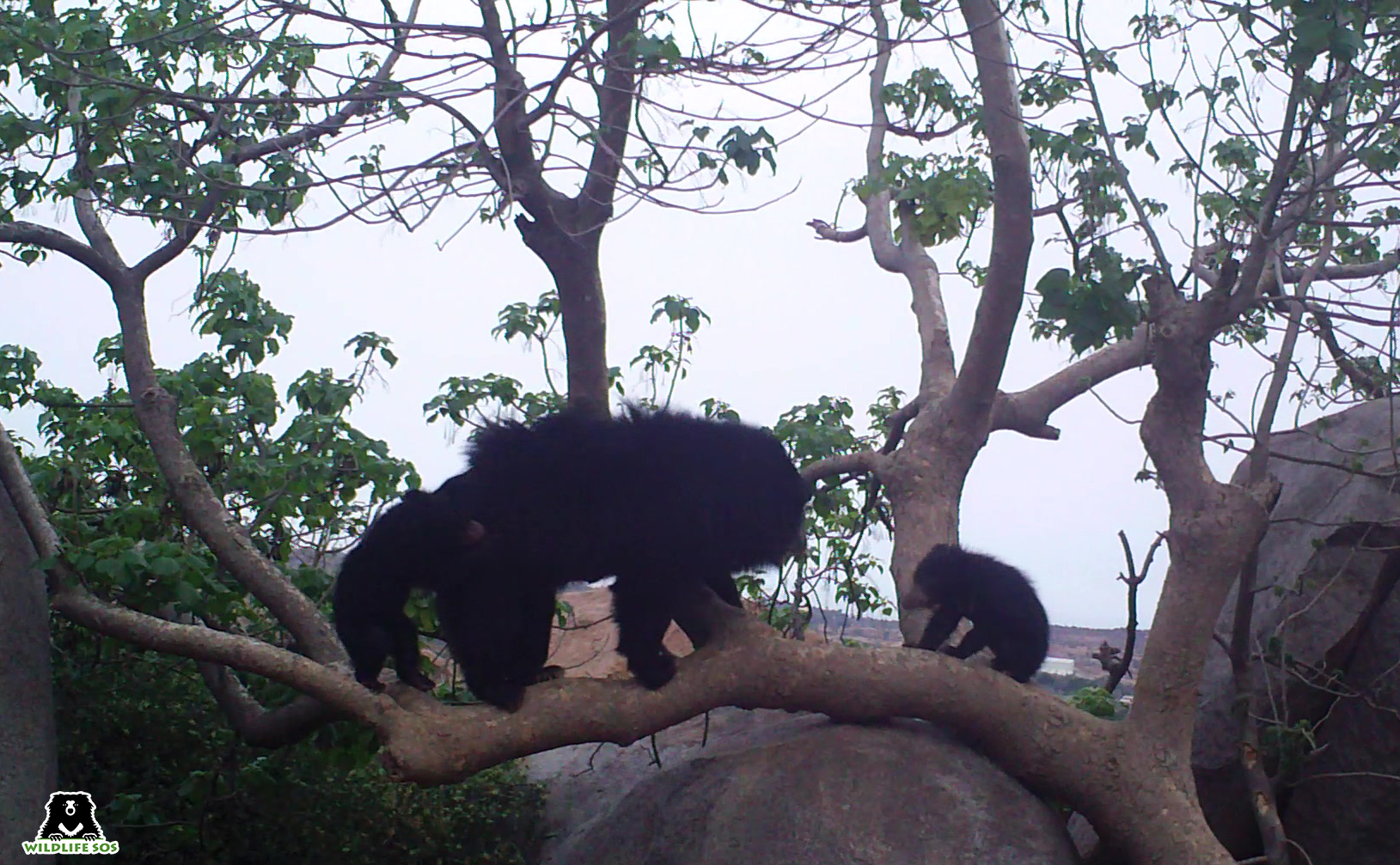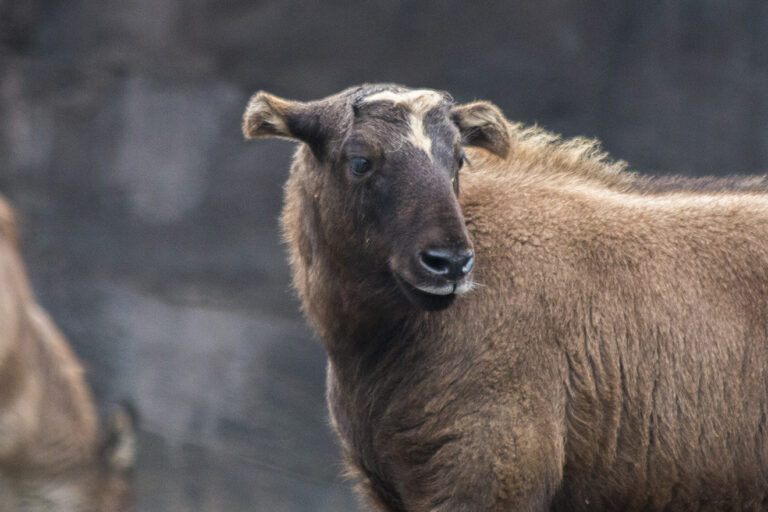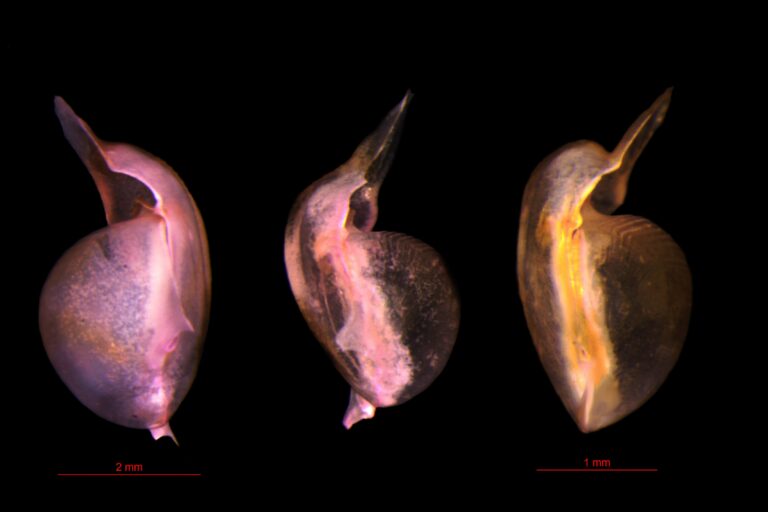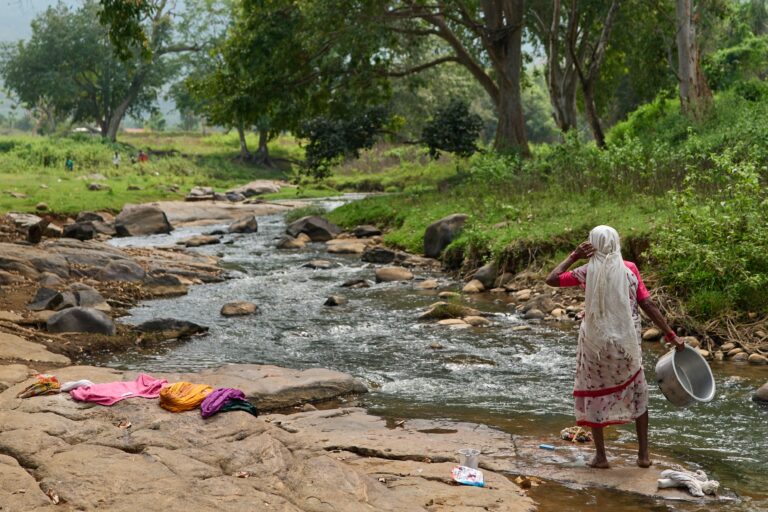- Sloth bears in India are at the centre of several conservation challenges, especially in human-dominated areas. Poaching is a concern in many parts of central India and their body parts are also trafficked illegally.
- Human-bear conflict is frequent across most of its range where bears regularly come in contact with people. Deaths caused by sloth bear attacks are a concern; people, in turn, tend to also engage in retaliatory killings.
- However, local communities do harbour positive attitudes to bears too, say some researchers. Capitalising on this, and using multi-faceted conservation actions and approaches may be the only way to build support for the species across its range.
Sloth bears are the world’s only bears built to eat ants. They love their occasional meat tidbits of course but thrive mostly on ants, insects, fruits and wild berries. Their diets in some areas also comprise an unlikely berry: tiny, blue-black lantana fruits. Finding lantana (Lantana camara) berries in sloth bear faeces isn’t new.
Studies of sloth bear diets have reported this from Tamil Nadu and Kerala in the 2000s. But now researchers find that in human-dominated areas surrounding Madhya Pradesh’s Bandhavgarh Tiger Reserve, sloth bears consume far larger proportions of lantana berries than recorded in these studies. Lantana berries were one of the six main fruits that the animals consumed in summer. So could sloth bears be dispersing the seeds of this invasive plant here? There’s no answer to that yet. But if they are, that could have huge management implications for the spread of lantana – an invasive plant whose spread governments and scientists are trying their best to find ways to curb – say the researchers.
But apart from possibly unwittingly dispersing lantana far and wide, sloth bears in India are at the centre of several conservation challenges, especially in human-dominated areas. This is where humans and bears often come in accidental contact, with dire repercussions for people (and sometimes for bears). Retaliatory killings of sloth bears are not unheard of; the animals are feared in many regions including central and eastern India for their aggression and “unpredictability”. In certain instances, there is also a cultural acceptance towards the bears. Studies find that without active management and conservation action, there will be no public support for the species across its range.

The sloth bear in India
The shaggy-coated and long-clawed sloth bear Melursus ursinus is endemic to the Indian subcontinent. In India it is widely distributed, and can be found wherever there are intact forests nearby: from the Western Ghats in the south to the foothills of the Himalayas in the north; and from the Aravalli hills of Rajasthan in the west to Assam’s floodplains in the east, according to the results of a questionnaire-based survey by a team including scientist K.Yoganand in 2006. A more recent study in 2015 found that the highest probabilities of sloth bear occurrence were in the landscapes that linked central India with the forests in the south.
The only population estimation of sloth bears still stems from the 2006 survey: the team estimated that there must be between 6,000 to 11,000 sloth bears in India, with around half of them living outside Protected Areas (PAs). The team also noted how the fragmentation of sloth bear habitats, as well as forest degradation (which hampers bear migration to colonise other forest patches), poaching and local extinctions, are concerns. “Overall, the sloth bear is threatened,” they wrote, “although it appears to be secure in some parts of its range.”

Threats outside protected areas
Sixteen years later, the sloth bear in India hasn’t been able to shake away any of these threats. In some parts of central India – such as in eastern Madhya Pradesh – sloth bears are still victims of poaching.
Ritesh Sarothiya, who has been with the Madhya Pradesh Forest Department’s Special Task Force (STF) since its inception in 2014 and now heads this section, says that poaching is a concern in eastern districts such as Shahdol, and neighbouring Bilaspur in Chattisgarh, which are not part of the PA network. Superstitions that bear genitals are aphrodisiacs abound, and people even use bear products in witchcraft, said Sarothiya. All the five bear poaching cases that the STF investigated over these years – and most of them outside PAs – were of sloth bears found dead, and missing one or several body parts – paws, gall bladders, claws or genitals. In a major operation in 2019, the STF nabbed a man who was alleged to have killed several sloth bears, tigers and other wildlife in the last 15 years.
Sloth bear body parts are also trafficked internationally as part of the illegal wildlife trade. Bear products are used in Chinese traditional medicine, commented Kartick Satyanarayanan, CEO and founder of Wildlife SOS, an NGO that runs Asia’s largest sloth bear rehabilitation centre. “Live bear cubs are also captured and smuggled to be used in the dancing bear industry which persists in some parts of Nepal.”
Since 1995, Wildlife SOS has rescued and rehabilitated 628 sloth bears that were paraded as “dancing bears” in India’s streets. They continue to monitor bear trafficking along the Indo-Nepal border, but the “porous nature” of the border makes this a challenging issue to address, wrote Satyanarayanan in an email.
Wildlife SOS has helped repatriate two sloth bears from Nepal to India. The process can take time since it requires a series of permits – such as transit permits, No Objection Certificates and permits from the Convention on International Trade in Endangered Species (CITES), from both countries, said Satyanarayan.
Their rescue and research teams – which operate in the states of Chhattisgarh, Uttar Pradesh, Madhya Pradesh Karnataka and Jammu and Kashmir – have come across several sloth bears deaths outside PAs, wrote Satyanarayanan. Apart from targetted poaching, the main causes of such deaths include road kills, bears getting trapped in barbed wire fences in agricultural landscapes, wire snares and explosive food baits, he added.

Human-bear interactions
Sloth bears, like all other wildlife, are oblivious to the man-drawn boundaries that distinguish PAs from other areas. They frequently amble into, and sometimes forage in, agricultural fields and other human-dominated areas: a recent study found that crops are also part of sloth bear diet in northern Odisha. A survey of almost 700 bear dens by Wildlife SOS in Karnataka showed that many maternal dens (that are used by a mother and her cubs for shelter) were located close to human settlements, roads and agricultural fields. Sloth bear mommas are fiercely protective of their cubs.
Human-bear conflict is inevitable in such cases and common in areas such as central India and Odisha. A study of human-bear conflict in Odisha’s Balasore Wildlife Division by researchers including Himanshu Palei of the North Orissa University found that most of the 167 bear attacks on people between 2002 and 2013 occurred along forest edges. People dependent on forests who were out collecting non-forest timber produce (NTFP; forest produce like mahua flowers and wild fruits such as tendu) bore the brunt of the conflict. Similarly in the Kanha-Pench area of Madhya Pradesh, most of the 166 bear attacks recorded between 2001 and 2015 occurred in forests; people of the Gond tribe faced more than half of these attacks as they collected NTFP or grazed their livestock.
Retaliatory killings of bears are not unheard of. In Odisha, Palei and team recorded seven retaliatory killings for 12 years. But researchers who interviewed people who had fallen victim to bear attacks in Karnataka over three decades (1985-2016) found that people recognised that most of the bear attacks were defensive and that people who noisily traversed sloth bear country were less likely to be attacked. The team has drawn up guidelines on such aspects that people need to be mindful of while in such areas to reduce conflict. Similar findings in Maharashtra have been worked into local conflict-mitigation plans.
Several social factors also play a role in the prevalence of human-bear conflict. In Odisha, many attacks occur during early mornings or late evenings when people use the outdoors to relieve themselves – a time when sloth bears are active too – said Palei.
“While the government has constructed toilets, people have to travel far to obtain water for its use,” he said.
Similarly, people who venture into forests or scrub jungles to collect firewood are also at high risk, said Prakash Mardaraj, honorary wildlife warden of Balasore Wildlife Division and an expert member of the IUCN Sloth Bear Specialist Group.

Loss of habitat and fragmentation
Several anthropogenic activities outside PAs could be aggravating conflict while also causing the degradation of forests existing in such landscapes. In Odisha, where human-bear conflict has been reported in 41 of its 50 forest divisions, the most pressing concern for sloth bears is habitat loss, said Palei.
“In southern Odisha, bear habitats outside PAs have been cleared for agriculture for extensive maize fields,” he said. “Mining is very common in north Odisha, and this has fragmented forest patches making it difficult for bears to migrate. There have been reports of local extinctions of sloth bears in such areas.”
In 2006, Yoganand’s questionnaire surveys suggested that sloth bears had already gone locally extinct in 35 forest areas including in parts of the northern Western Ghats, the western semi-arid zones and the Terai. Most of these extinctions had occurred in areas that were isolated from forest patches, revealing the importance of forest connectivity for the species. Both habitat loss and forest degradation are listed as among the main threats to sloth bears by the IUCN Red List; these, along with its overall declining population make it a “Vulnerable” species in the List.

Ways forward
But while conflict seems to be the only aspect in focus when it comes to human-bear interactions, peoples’ attitudes are not always negative, said Palei. “In Odisha, sloth bears are common and people have been living with them for so long,” he said. “There is a lot of cultural acceptance for the animal here. People sometimes do sympathise with sloth bears, and feel that the animals need to survive for they are part of the landscape too,” he said.
Capitalising on this, and increasing awareness – on aspects ranging from the ecological role of sloth bears, how to avoid them – as well as tackling conflict sensitively could be crucial. In Balasore Wildlife Division, for instance, Mardaraj has worked with local panchayats and state electricity, water and forest departments with support from the IUCN and Rufford Foundation to erect solar night lights and water pumps in conflict-affected villages. “We have also facilitated households in such villages to avail of the Centre’s Pradhan Mantri Ujjwala Yojana scheme that provides cooking gas cylinders at subsidised costs,” he said. “This reduces their need to collect firewood from forested areas.”
A series of awareness programmes at the community level have also helped prevent at least 12 retaliatory killings of bears (between 2017 and 2019) that got trapped in snares, added Mardaraj.
Several studies note that such multi-directional approaches – and often, site-specific conservation programmes – may be the only way to build support for a locally-feared animal that faces a multitude of conservation challenges across its range.

Banner image: A sloth bear and cubs photographed on camera trap. Photo from Wildlife SOS.













